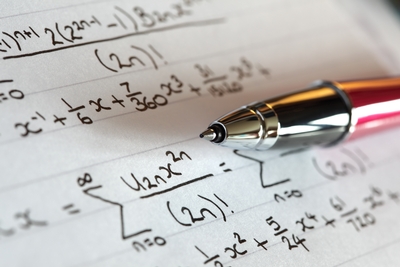Mathematicians need editors. But why should that be? Aren’t mathematical manuscripts rather short on words? And as for the symbols, don’t they look after themselves?
In fact, mathematics has plenty of words, particularly at the research level, and the wordy passages are often where the exposition and explanation occur. A page in a typical mathematics research book might consist primarily of text-heavy paragraphs, with only a few lines of displayed mathematics breaking up the text.
 Knowing how to edit mathematical prose, then, is a crucial part of my role as a mathematical editor. To do this effectively, I’ve had to put aside some of the conventional rules of style. For example, writing guides not geared towards mathematics might consider expressions such as therefore implies to be redundant. In mathematical writing, which characteristically involves long strings of implications, such locutions can in fact be useful. They allow the writer to neatly express the layered idea “X implies that [Y implies Z].”
Knowing how to edit mathematical prose, then, is a crucial part of my role as a mathematical editor. To do this effectively, I’ve had to put aside some of the conventional rules of style. For example, writing guides not geared towards mathematics might consider expressions such as therefore implies to be redundant. In mathematical writing, which characteristically involves long strings of implications, such locutions can in fact be useful. They allow the writer to neatly express the layered idea “X implies that [Y implies Z].”
There are many points where mathematical prose deviates from conventional style. A good way to learn the subtleties is to read some books on mathematics. Graduate textbooks are particularly helpful: as well as being replete with research-style prose, they typically are well edited.
The other key aspect of mathematical editing — the treatment of symbols — presents its own difficulties. Some help comes in the form of specialist software (such as \(\mathrm{\LaTeX}\) or MathJax) that automates much of the typesetting, determining how much space to place between symbols, how to format a subscript within a superscript and so on.
The software goes only so far, though: it doesn’t decide which symbols to use and it can’t mend incorrect mathematical input. Therefore, as an editor I sometimes need to query an equation or formula that looks wrong. A good resource to help prepare for this task is the mathematics chapter of The Chicago Manual of Style. A fuller set of guidelines is found in the American Mathematical Society’s Mathematics into Type, which is available online as a free PDF.
I’d like to end with some advice that has helped me gain the trust of authors: never make a silent change when editing mathematical writing, whether the change involves text or symbols. Every “rule” could turn out to be a mistake on the next project. A great example is seen in Chicago, which claims that the expression \(\sqrt{a^2 + b^2}\) may be replaced by \((a^2 + b^2)^{1/2}\). The claim is partially correct, but there are certain contexts where the latter expression does not have the same meaning as the former. Making the change silently could cause the author a lot of embarrassment!
The Editors’ Weekly is the official blog of Editors Canada. Contact us.
Discover more from L'HEBDOMADAIRE DES RÉVISEURS
Subscribe to get the latest posts sent to your email.
